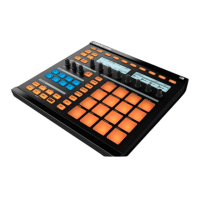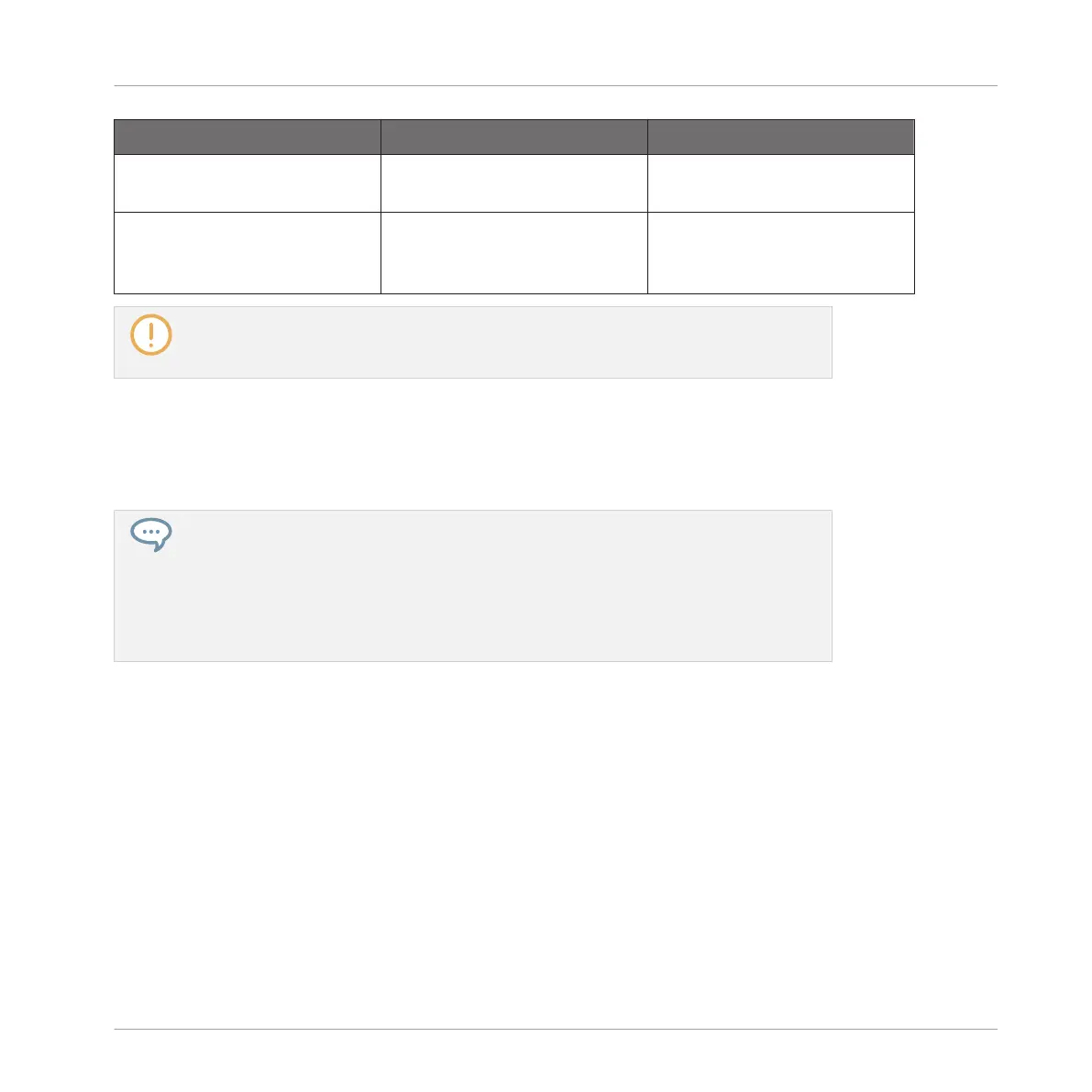Modulation Automation
Target parameters At the Sound and Group
levels only (see below)
At all levels (Sound, Group,
and Master)
Nature of the change
(continuous parameters only)
Relative (defines a deviation
to the non-modulated value)
Absolute (defines a new value
regardless of the non-
automated value)
This section describes how to use modulation in MASCHINE — for more information on
using automation, please refer to section ↑8.2.3, Controlling Parameters via MIDI and
Host Automation.
Please note that modulation and automation are not mutually exclusive: You can modulate a
parameter in MASCHINE and automate it (e.g., from your host) simultaneously! As a result,
the parameter value will deviate (according to the recorded modulation) from its moving value
defined by the automation.
Example: Let’s assume that you have recorded some modulation for the Cutoff parame-
ter of a Filter Plug-in in order to create a filter sweep. Since modulation is defined rela-
tive to the non-modulated value, by manually adjusting the Cutoff parameter you can
shift the entire sweep across frequencies. By assigning this Cutoff parameter to a MIDI
control or an automation ID (see section ↑8.2.3, Controlling Parameters via MIDI and
Host Automation to know how to do this) you can create a filter sweep that automatically
moves across frequencies!
7.5.1 Which Parameters Are Modulatable?
All the modulatable parameters are found in Plug-ins or Channel properties (e.g., you cannot
modulate the Pattern Length or the Step Grid resolution). This means that all modulatable pa-
rameters are found in a Parameter page of the Control area (when the software is in Arrange
view).
In order to be modulatable, parameters of Plug-ins and Channel properties have to meet fol-
lowing requirements:
Working with Patterns
Recording and Editing Modulation
MASCHINE - Manual - 359

